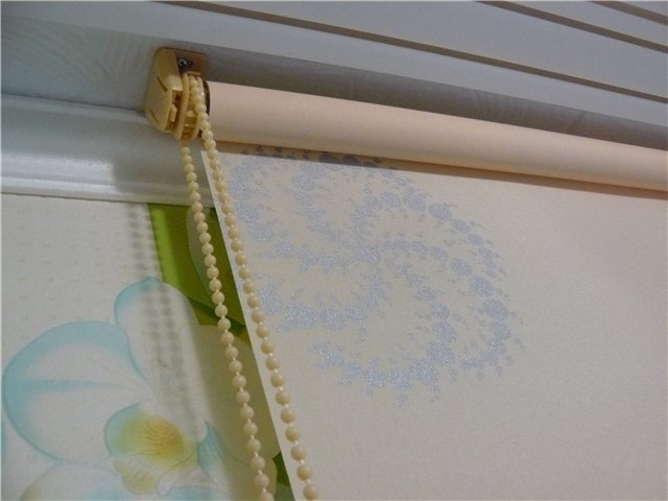Contents:
- How to properly drain and prepare the unit?
- Tips for disassembling the structure and cleaning the wet TEN
- Features of cleaning the dry TEN
- Efficient descaler in the boiler
Specialists insist that the cleaning of the boiler, regardless of its type and design features, should be conducted at least once a year. When using very hard water with many mixtures - even more often. If this manipulation is neglected, the inner part of the container and the heater( heating element of the structure) will be covered with a scale layer that will interfere with the normal operation of the device and may even lead to its breakage.
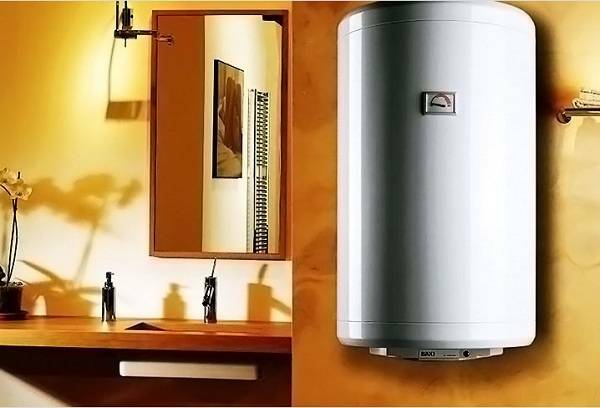
Contrary to popular belief, it is not necessary to call a specialist to perform preventive cleaning of the boiler. Even at home, the details of the device can be restored quickly and without the risk of reducing its functionality.
How to properly drain and prepare the unit?
Before starting to clean, the boiler must be freed from water. The easiest way to do this is if the device is located above the bathroom or you can put a volumetric tank under it. Well, when the heater is screwed directly into the tank, it can be pulled out simultaneously with draining the liquid. In some models, to remove the element, you have to unscrew the numerous nuts, then the boiler is emptied beforehand.
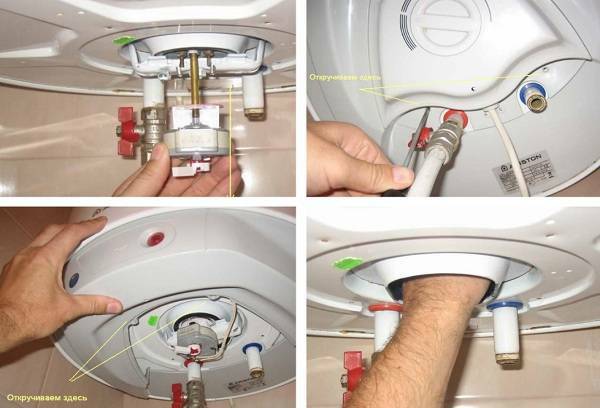
The algorithm of draining the water always looks like this:
- The device is disconnected from the mains and shut off the water supply tap( on the pipe).
- We close the tap, which is responsible for the supply of cold water, located near the heater. After that, on the nearest mixer we start water, so that the glass is hot.
- To the drain fitting we mount the tube, we direct it to the sewer, we lower the water by opening the tap.
In the absence of cranes and fittings, all liquid can be drained through the safety valve. The main thing is to act cautiously and consistently so as not to burn yourself and cause an accident.
Tips for disassembling the structure and cleaning the wet electric heater
Before cleaning the boiler, the device must be disassembled by pulling the heater. To do this, first remove the decorative plate, covering the contacts and the place of attachment of the element. It can be screwed on or fixed on the latches. Reaching the internal elements, they are recommended to take a picture so that there are no problems with the subsequent restoration of the system.
We disconnect all contacts, after which we take out the heater. If the device has not been descaled for a long time, we act very cautiously. The accumulated dirt may not allow the heating element to be easily removed. It is not necessary to pull it, it is better to try to carefully clean the deposits.

Tip: When you get to the interior of the structure, it is recommended to evaluate the state of the magnesium anode. If it is very thin, then it should be replaced, without waiting for the element to fail.
In most cases, the descaling layers are assembled on the tubular part, and there are not so many inside the tank. It is enough to start the water to wash all the unnecessary water from the boiler itself. If you can not clean the boiler in this way, you will have to work with your hands. The main thing is not to try to facilitate the process by using aggressive abrasives. It is necessary to use only proven methods of safe means.
To clean off the scale of the heater itself, it is necessary to perform the following manipulations:
- The main part of the dirt is mechanically cleaned using a knife or something like that.
- Next, in a tall glass made of a plastic bottle( just cut the neck) we cultivate citric acid. For 2 standard sachets of powder about 2 liters of warm water.
- TEN placed in this design for at least a day. This time will be enough for all the dirt to come off, and the heating element returned its original form.
After carrying out these manipulations, it is possible to assemble the boiler, test it and subject it to further operation.
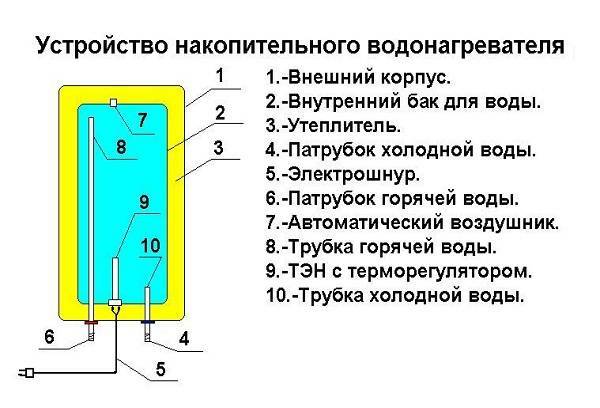
Features of cleaning dry heaters
Dry TEN - this is a special analogue of the traditional element, which has a ceramic coating. The approach to cleaning it at home is not much different from the one described above, but still has a number of nuances:
- In this case, cleaning the heater prohibits the use of a mechanical pre-treatment method. The appearance of even the smallest scratches on the surface of the product can adversely affect its functionality.
- For soaking the object to remove scale, not only citric acid can be used, but also a concentrated vinegar solution. In addition, you can choose a suitable version of household chemicals from the profile store. The main thing is not to deviate from the rules stated in the instruction.
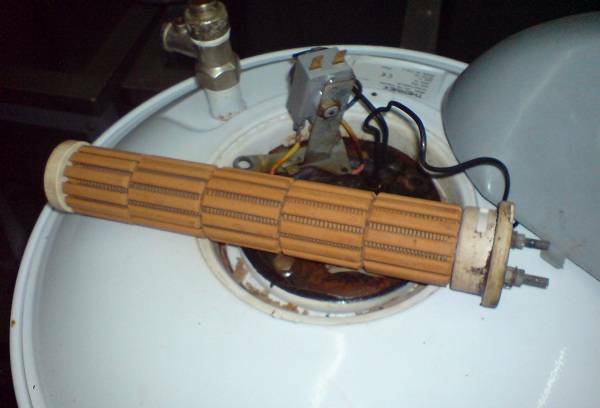
After completion of all work, the heater is washed in clean water and installed in its place. Do not dry it! The device is ready for further work.
Effective descaling agents in the
boiler. Before cleaning the boiler inside, it is necessary to determine the appropriate cleaning agent. The best option for descaling is citric acid. But the concentration of the solution to achieve the desired effect is recommended to increase at least 2 times. No less effective and profile means. Despite the slightly overpriced value, such reagents allow only one approach to achieve the desired result.
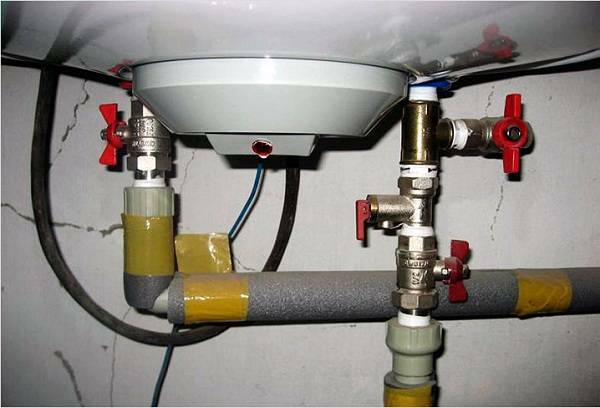
Now we need to understand how the prepared composition will be inside the device, so that the boiler starts cleaning. In practice, everything turns out to be quite simple:
- First, empty the container one third through the hot water tap.
- Then connect the hose to the drain hose, through which we pour the prepared solution to dissolve the scale. Problems with this will not arise if the end of the hose is located above the device.
- After the composition is poured, we block all the cranes so that the mass can act on the sediments. Depending on the type of agent and the intensity of contamination, the solution can be in the container from a few hours to a day.
- After necessary time, drain the liquid and thoroughly rinse the boiler with clean water.
A similar descaling option can also be used when the heating element can not be removed due to structural features. Then the device is completely removed and all manipulations are carried out exactly the same way, only to disassemble the device is not necessary. This troublesome manipulation can take a lot of time, especially if a lot of dirt has accumulated in it during the operation of the boiler.
Timely and correctly carried out cleaning of the boiler and its elements allows to increase the service life of the device, reduce the risk of its breakdown, increase functionality.

